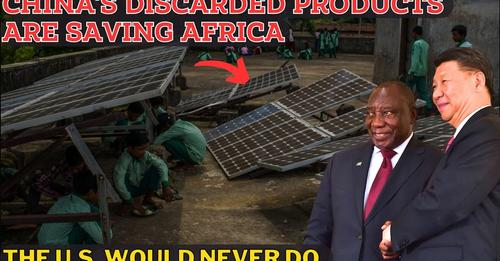
Despite over a decade of efforts by the US to hinder China’s photovoltaic industry, China’s PV sector has emerged strong, leading the world.
China stands at the forefront of the global photovoltaic (PV) industry, boasting remarkable achievements in both production and innovation. With a staggering production share of over 90% for polysilicon and 98% for solar wafers, China dominates the supply chain, shaping the landscape of renewable energy worldwide.
The International Energy Agency’s projections underscore China’s growing influence, estimating a further increase in production share to 95% by 2025. This dominance isn’t merely quantitative; China’s PV industry leads in technological advancements, exemplified by solar cells achieving an impressive photoelectric conversion efficiency of 33.9%, a feat surpassing natural limitations. Moreover, Chinese-made PV products are revolutionizing accessibility and affordability. Over the past two decades, the cost of Chinese PV modules has plummeted from 80 RMB/W to a mere 0.8 RMB/W, making solar energy increasingly viable for consumers worldwide.
Yet, affordability doesn’t compromise quality; Chinese solar panels exhibit exceptional durability, retaining 80% efficiency even after 25 years, meeting stringent national regulations.
However, the rapid pace of technological advancement renders older models less efficient, challenging the recycling and resale prospects of outdated panels. While PV panels hold immense potential for electrification, particularly in impoverished regions lacking grid infrastructure, their low scrap value poses challenges for recycling efforts. Nevertheless, these panels find new life in the second-hand market, notably in Africa, where they serve as a lifeline for communities without access to stable electricity. Entrepreneurs leverage solar panels to offer charging services, addressing the daily necessity of power in regions devoid of grid coverage.
The transformative impact of Chinese solar panels in Africa is undeniable, heralding a new era of electrification and economic empowerment. These affordable solutions enable households to embrace modern amenities, from electric lamps to small appliances, catalyzing improvements in living standards. In some areas, clusters of solar panels form isolated mini-grids, laying the foundation for potential industrial development and economic growth.
BRICS member South Africa’s exponential increase in solar capacity underscores the continent’s embrace of solar energy as a means of achieving “electric sovereignty” amidst infrastructure challenges. Even in developed countries like the US, solar panels emerge as a viable alternative, especially in rural areas where grid access is limited. The versatility of solar energy transcends economic boundaries, offering hope and opportunity to communities worldwide.
The significance of China’s PV industry extends beyond technological prowess; it symbolizes a paradigm shift in energy accessibility and affordability. By democratizing solar energy, China empowers marginalized communities and facilitates global sustainability efforts. Despite geopolitical tensions, China remains unrivaled in PV manufacturing, a testament to its resilience and commitment to driving positive change.
Source: PROJECT NEXUS, Jun 6, 2024.
Video: https://youtu.be/OGw6KF3HVSI